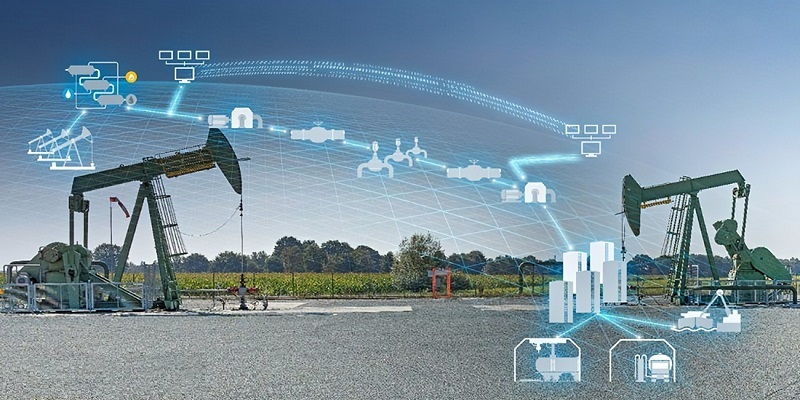Digitalization of oilfield equipment
The core pursuit of enterprises in the oil and gas industry is to maximize the value of oil and gas assets, involving the development and operation of reservoir assets and facility assets.

The digital transformation of non-digital native enterprises can be carried out around two aspects: one is to think about how to upgrade and transform the traditional oil and gas industry technology field; the other is to face the future and create a new oilfield service technology and a new model through digital technology, which is called double digital transformation.
Traditional enterprises will face many risks when undergoing digital transformation, and transformation around core capabilities can seize advantages in new markets and improve the success rate of transformation. Through digital transformation, on the one hand, we will reshape existing core businesses, and on the other hand, create new technologies and new models. This needs to be further realized with the help of external digital superior resources, cross-field cooperation, external employment, and acquisition. In addition, the digital transformation of traditional businesses can be more proactive, and new businesses need to be constantly trial and error, iteration, and risk control. It is worth noting that a new business requires independent teams and veteran employees who can mobilize core business resources.
At present, in terms of software tools in the entire field of oil and gas exploration and development, there is a set of all-field solution systems in the world, and the corresponding product chain covers the application software of the whole business data and knowledge, completing the application closed loop of seismic, geology, reservoir, engineering and other integration. The oil industry solution providers represented have formed a complete set of software development models for the whole industry chain from the underlying data model to professional application software and then to the closed-loop of full-service applications. It realizes a unified industry data model and knowledge model, unified industry application software integration, and unified business collaboration covering the whole business ecosystem. The ecological environment of the industry is gradually taking shape.
Taking intelligent drilling as an example, the biggest demand in the drilling process is to reduce costs and improve efficiency, the most critical of which is to increase drilling speed (ROP). The factors affecting the drilling speed include stratigraphic geology and lithological factors, drilling bit factors, wellbore pipe combination and power device, drilling fluid configuration, wellhead engineering construction parameters, etc. During the drilling process, it is necessary to consider the influence of multiple factors such as different formations, drill bits, pipes, drilling fluids, and wellhead power systems, and clarify the correlation between drilling speed and different parameters.
The drilling scenario generates a large amount of data and a big data body that integrates the real-time collection data (second data), drill bit drilling tool data, drilling fluid data, and formation data of the wellhead are built based on the business process, and then the relationship between these data elements and the final drilling speed is analyzed by machine learning algorithms to obtain the most effective drilling speed prediction. Finally, according to the drilling speed prediction model, the options and quantitative values of drilling parameter optimization are proposed in reverse. Through artificial intelligence to find potential correlations between parameters, based on immutable factors, by adjusting variables to speed up underground drilling under the premise of ensuring safety, thereby reducing the high time cost of drilling, higher efficiency, and quickly applicable to different environments.
In the application process of artificial intelligence technology, it is first necessary to obtain various sample data from different data sources, unify the anomalies and problems in the sample data, and then fuse them to form training samples.
Based on the training samples, the business classification of data (may be different construction well sections, different strata, and lithology, or different drilling tool combinations) is carried out from the business perspective, and then the feature engineering that can reflect the correlation relationship is designed based on specific business classification, and these features may use professional algorithms and empirical formulas.

Finally, by selecting and hooking different intelligent algorithms for training, the algorithm model is formed, and then the model is published as a service, and finally the drilling speed prediction and drilling parameter optimization in the drilling process are carried out through real-time data.
Digital and intelligent technologies have begun to be applied on a large scale in the field of global oil and gas production; around 2025, it will be promoted on a large scale in the field of global oil and gas production; after 2030, it will be fully applied. The application of digital and intelligent technologies in oil and gas production can increase oil and gas recovery by more than 20% while reducing costs by more than 20%. This will greatly increase global oil and gas resources and enhance oil and gas competitiveness.
How is the Oil & Gas industry adapting to digitization? – YouTube

 By Sun
By Sun

